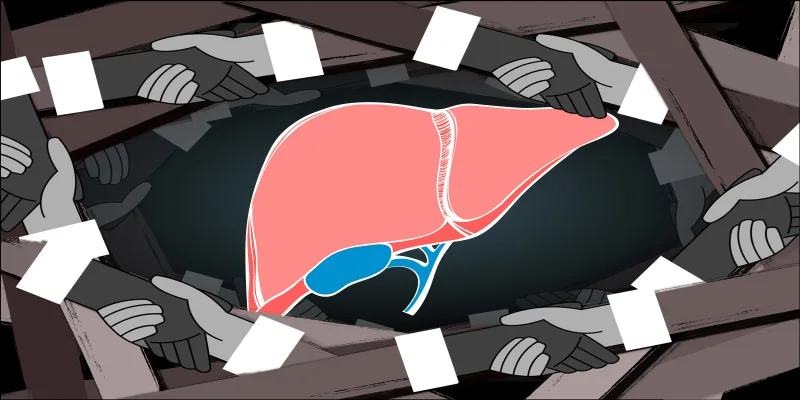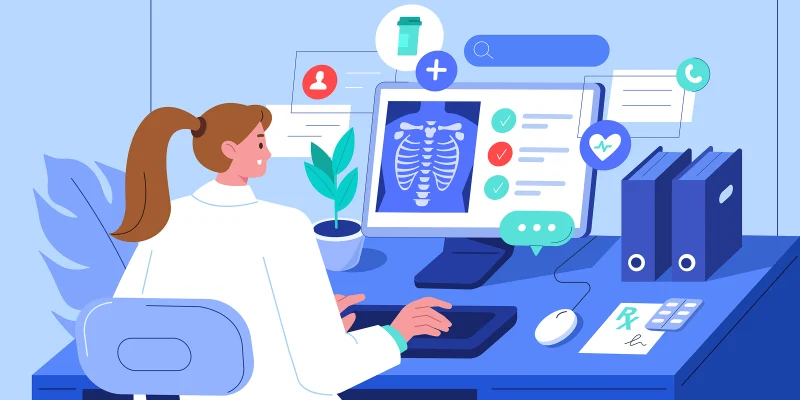 It is evident that our healthcare system needs correction. It has become increasingly complex, expensive, and burdensome for both caregivers and patients. Predictably, most of the solutions implemented to date have been based on hierarchical, top-down models. However, medicine is, at its core, rooted in the basic physician-patient relationship—a fiduciary and personal covenant between individuals. It is no surprise that most attempts at centralized management of this relationship have been largely unsuccessful. The distancing of physicians from patients has not only resulted in a devaluation of services (as perceived by the patient), but also a shocking misalignment of priorities and increasing loss of focus by caregivers.
It is evident that our healthcare system needs correction. It has become increasingly complex, expensive, and burdensome for both caregivers and patients. Predictably, most of the solutions implemented to date have been based on hierarchical, top-down models. However, medicine is, at its core, rooted in the basic physician-patient relationship—a fiduciary and personal covenant between individuals. It is no surprise that most attempts at centralized management of this relationship have been largely unsuccessful. The distancing of physicians from patients has not only resulted in a devaluation of services (as perceived by the patient), but also a shocking misalignment of priorities and increasing loss of focus by caregivers.
To understand how such a personal and private exchange evolved into a multi-party transaction, one must first understand the origins. Centuries ago, medical care was delivered in the home by a local physician. Only the poor were cared for in hospitals, often run by religious orders. (For example, the Hospital of St. John in Brugge was established in the Middle Ages to care for sick travelers or pilgrims.)
Fast forward to the 19th and 20th centuries: as physicians began to understand infectious disease and develop sterile technique and anesthesia, surgery and hospitals quickly became the hubs of medical care. However, as effectiveness improved, complexity and expense increased, leaving many without adequate finances for treatment. While physicians and hospitals endeavored to provide services to the poor out of ethical obligation, the rapidly increasing costs eventually overwhelmed goodwill, making medical care a privilege of the well-resourced few.
During World War II and the Korean conflict, the Roosevelt and Truman administrations imposed brief periods of wage and price controls. With so much of the traditional workforce called to military service, wartime industries were forced to provide non-wage incentives to attract and retain workers.
The nascent health insurance industry naturally evolved to focus primarily on the needs of employers who were, in fact, the paying customer. This further distanced individuals and caregivers. Over time, state and federal regulators began to mandate health insurance for most employers, spawning new layers of bureaucracy (and the costs associated with them).
For insurance carriers, increasing regulation was accompanied by diminished control over risk management. This was offset somewhat by a customer base created by government mandate. Predictably, this environment was fertile ground for consolidation in the insurance industry, and it is no surprise that we currently have many states wherein only a few major carriers operate.
The consolidation of the insurance industry has led directly to a similar consolidation in healthcare delivery. Hospitals and medical practices that formerly operated independently—and competitively—are now forced to combine in order to negotiate contracts with large carriers. Caregivers are then compelled to operate within referral networks of contracted facilities and providers, regardless of the need or convenience of individual patients. As personal interaction in medicine has been subordinated, determining who is going to pay for care has become more important than how best to deliver it.
In his book, “The Sharing Economy,” Arun Sundararajan describes the difference between crowd-based “networks” and centralized institutions, or “hierarchies.” He contends that the emergence of disruptive technologies like Uber, Lyft, or Airbnb is really a return to a much simpler peer-to-peer transaction. That is, by connecting people with assets to people willing to rent them, waste is reduced and the result is a more efficient system. In a sharing economy, proximity is often a key factor, and using digital technology taps into decentralized excess capacity rather than creating new monolithic systems. (1) Current healthcare policies are based on a hierarchical model, despite the fact that we deliver care on a peer-to-peer level.
From the caregiver’s perspective, the last decade has seen an explosion of administrative tasks. Data collected and transcribed to meet the rising demands of insurers has created a secondary process that no longer supports a natural interaction between physician and patient. In the United States, we spend more time and resources on administrative tasks than any other developed country. (2) Financial incentives and their associated penalties dictate the workflow, rather than the needs of a particular patient treatment or technology. Outcomes are no longer judged by the patient’s experience or the physician’s skill, but rather by how well the process of care was carried out. The priority is to satisfy the needs of the system even if it means added delays or cost. It is no wonder that 42 percent of physicians report burnout. (3)
As more independent physicians are forced to join larger organizations, the needs of the organization will continue to de-prioritize the needs of the patient. And because decisions are made from the top down, those affected most are often those least able or willing to affect change.
Too often, care is determined by what an insurance plan will allow—and it has been this way for so long that we no longer perceive the true value of a doctor’s visit. Add to that the delays, frustration, soaring premiums, and higher out-of-pocket expenses and it is not surprising that people are seeking consumer-oriented alternatives, or simply delaying care altogether. The 2017 Consumer Healthcare Priorities Study showed that the single most important hallmark of quality care for a patient is the doctor-patient relationship, yet the current system has rendered it almost irrelevant.
Biotechnology is rapidly changing the landscape of medical care. Treatments that once required hospitalization or large-system delivery are now individualized to the patient and can be delivered in a home setting. The future of healthcare will be determined by how well society adopts newer technologies. Just as technology has created a convenient solution for ride sharing and affordable lodging, it can also deliver medical care directly and more efficiently to patients. Any disruptive technology is usually a response to a demand that the current system is not fulfilling. When it comes to healthcare, hierarchical thinking doesn’t work.
It is not hard to argue that dissatisfaction among patients and caregivers is largely a result of an increasingly distant, expensive, and unresponsive cabal of disassociated interests. Unfortunately, the typical political response to this dissatisfaction is to impose additional regulation and centralized control. As Americans, we share a common desire for efficiency, consistency, and predictability. That said, we also share a common expectation of quality—especially in medical care. Likely, the first step in improving the healthcare system is to stop thinking of it as a system at all.
References
- Sundararajan, Arun. The Sharing Economy: The End of Employment and the Rise of Crowd-Based Capitalism. 2016. Cambridge, Massachusetts and London, England: MIT Press.
- Papanicolas, Irene, Woskie, Liana R., Ashish K., Jha. “Healthcare Spending in the United States and Other High-Income Countries.” JAMA. 2018; 319(10):1024-1039.
- Peckham, Carol. “Medscape National Physician Burnout & Depression Report 2018.” January 17, 2018.
Image by wan wei / Shutterstock
UBERDOC Founder and CEO Paula M. Muto, MD FACS, is a practicing vascular and general surgeon in solo practice and the owner of the Vein Center at Mutosurgical. She is a member of a family of physicians and surgeons who have collectively practiced medicine in Massachusetts for over 50 years. She is an outspoken advocate for patient care and is passionate about women’s health issues.
Mark Muto, MPH is a member of the UBERDOC Advisory Team and is the Founder and President of PACE Systems. He is an expert in the use and implementation of electronic medical records, as well as non-medical office systems.






